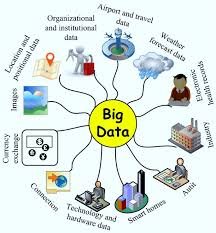Decoding the Web, Defining the Data
The modern digital world thrives on two fundamental pillars: the web and data. The web connects us, informs us, and empowers us to create, while data defines how we understand the world and make smarter decisions. Together, they form the backbone of technology-driven innovation. But what does it mean to truly decode the web and define the data? Let’s dive into this modern tech journey. Decoding the Web The web is more than just websites and social media platforms. It is a vast ecosystem of interconnected technologies that shapes our daily lives. From web development to cloud applications, every online experience is carefully crafted by developers who build seamless, responsive, and user-friendly interfaces. Decoding the web means understanding the elements that make it functional and engaging: In short, decoding the web is about uncovering how the technologies behind your favorite apps and platforms collaborate to create the seamless digital world we use every day. Defining the Data If the web is the body of the digital world, data is its lifeblood. Every search query, social media post, e-commerce purchase, or even a fitness app activity generates data. But raw data, without structure or analysis, is meaningless. That’s where data analytics and data science come in. Defining the data involves turning endless streams of information into valuable insights: Defining the data means giving it context, relevance, and purpose so that it becomes a driver of innovation rather than just a digital by-product. The Intersection of Web and Data What makes the web truly powerful is its integration with data. Modern platforms thrive at this intersection: In essence, the web provides the canvas, and data provides the paint. Together, they create a living picture of how technology can empower people, businesses, and societies. Challenges in Web and Data Integration Despite their potential, both web and data come with challenges: The Future Ahead As technology evolves, the fusion of web and data will only deepen. The future may bring: For learners and professionals, this means that skills in both web development and data science will remain some of the most in-demand in the coming years. Conclusion To decode the web is to understand how technology connects people and builds platforms that enhance lives. To define the data is to transform information into actionable insights that guide smarter choices. Together, they shape the digital future we are living in today. Whether you are a developer, analyst, entrepreneur, or simply a curious learner, embracing the synergy of web and data will open doors to endless opportunities. After all, in a world that runs on connectivity and intelligence, those who master both will be the true architects of tomorrow.









